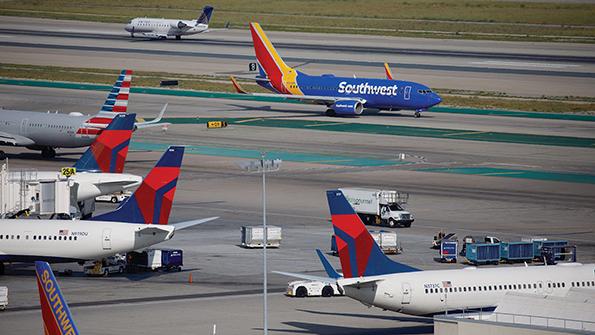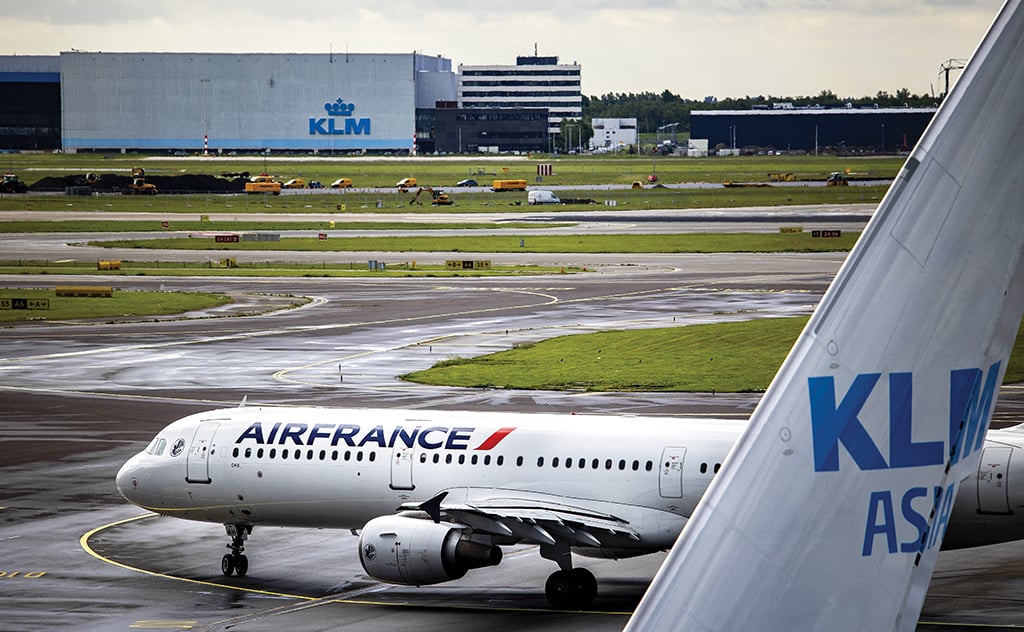
Southwest is adjusting to huge post-pandemic staff additions and, like Delta and United, driving out operational inefficiencies to maintain margins.
“Never read fully restored as fully optimized,” warned Southwest Airlines CEO Bob Jordan in June. Describing the airline’s pre-2020 network as “a machine,” with frequencies and flights in the right places, the carrier’s pandemic-era expansion of service came as it went, “looking for new revenues anywhere [we could] find them,” he added.
Staffing per aircraft is “as high as it’s ever been,” Jordan noted, speaking at the Bernstein Strategic Decisions Conference. Projecting a full network restoration to pre-pandemic levels by the end of 2023, Jordan told investors: “There is a lot of inefficiency in the system.”
- Following restorations of demand and capacity, carriers seek to optimize
- Post-pandemic growth is shifting from strong to steady
Strong seasonal demand made the summer largely profitable for U.S. legacy carriers, though low-cost and more domestically focused airlines struggled to maintain healthy margins while travel appetites shifted to favor international destinations. As the year progressed, Southwest was not the only airline to tout a focus on optimization—several have voiced cautious approaches to 2024 while familiar challenges persist.
Delta Air Lines CEO Ed Bastian has suggested any industry talk of planned capacity growth should be read as “somewhat aspirational” amid rising fuel prices and “tremendous” constraints affecting air traffic control, the supply chain, labor and OEM deliveries. Calling its own growth rate over the last two years as it worked to restore its network “unprecedented,” the Atlanta-based airline expects growth to normalize in 2024 through plans to reduce operational buffers and drive out inefficiencies, thus optimizing operations.
Delta is among those with revenues bolstered by credit card and other loyalty programs, with more than half of its revenues coming from maintenance, repair and overhaul, cargo and loyalty offerings. The strategy of a diversified stream is one that United Airlines also exercises, enabling solid results despite demand fluctuations. Still, capacity planning for United in 2024 will be “even more important to achieve our financial goals,” said Andrew Nocella, United’s executive vice president and chief commercial officer. The airline intends to let the 30% growth it has added to transatlantic operations since 2019 mature in 2024, while planning little to no growth for the first half of next year on domestic flying in order to “align with industry conditions.”

American Airlines, which posted a net loss for the third quarter on revenues that were nearly flat year-over-year, will be “incredibly focused” on deploying assets in profitable markets in the quarters ahead, CEO Robert Isom said. “We will have very little tolerance for what you would consider ‘investment’ or ‘development’ flying,” Isom told investors on an earnings call. “We’re going to fly where we make money.”
Hub carriers in Europe also are riding into 2024 on a wave of strong demand growth and a rapid recovery pace that is likely to be tempered in the coming months, particularly due to delivery constraints and in the case of some operators, engine issues affecting operations.
European airline executives have sounded a watchful note in recent weeks about the effect high inflation may have on consumers’ ability to spend money on travel, even if there are no signs yet that inflationary pressures have filtered through into a slowdown in bookings. Geopolitical upheaval in the region and its effect on travel are also firmly on their radar.
In their latest updates, Europe’s “Big Three” airlines said traffic was close to 2019 levels. In October, as it presented its third-quarter results, Air France-KLM said it was expecting 2023 capacity to reach roughly 95% of 2019 levels. International Airlines Group (IAG), the parent company of British Airways, Iberia, Aer Lingus, Level and Vueling, also said in October it was expecting to reach 96% of precrisis traffic in 2023 and fully recover in 2024. Lufthansa, presenting its third-quarter results in November, flagged a “challenging” geopolitical situation but stated: “Our booking outlook gives us reason to be positive—not only for a very good group result this year, but also beyond.”
Airlines are keeping a close eye on costs as they transition from the strong post-pandemic growth phase into a more measured pace of growth. Lufthansa Group, which managed a 0.9% reduction in unit costs during the most recent quarter despite the impact of inflation, is following a policy of “strict cost management.” Going into 2024, the airline group expects capacity to reach about 95% of 2019 levels.
Some 30 aircraft are set to join the Lufthansa Group’s fleet during the year. “Efficiency improvements are expected to support a reduction in unit costs, provided that system-wide operational stability continues to improve, especially in the group’s home market, Germany,” Lufthansa said Nov. 2. “Nonetheless, the company is mindful of geopolitical and macroeconomic risks and will preserve maximum flexibility to adapt its plans if necessary.”






